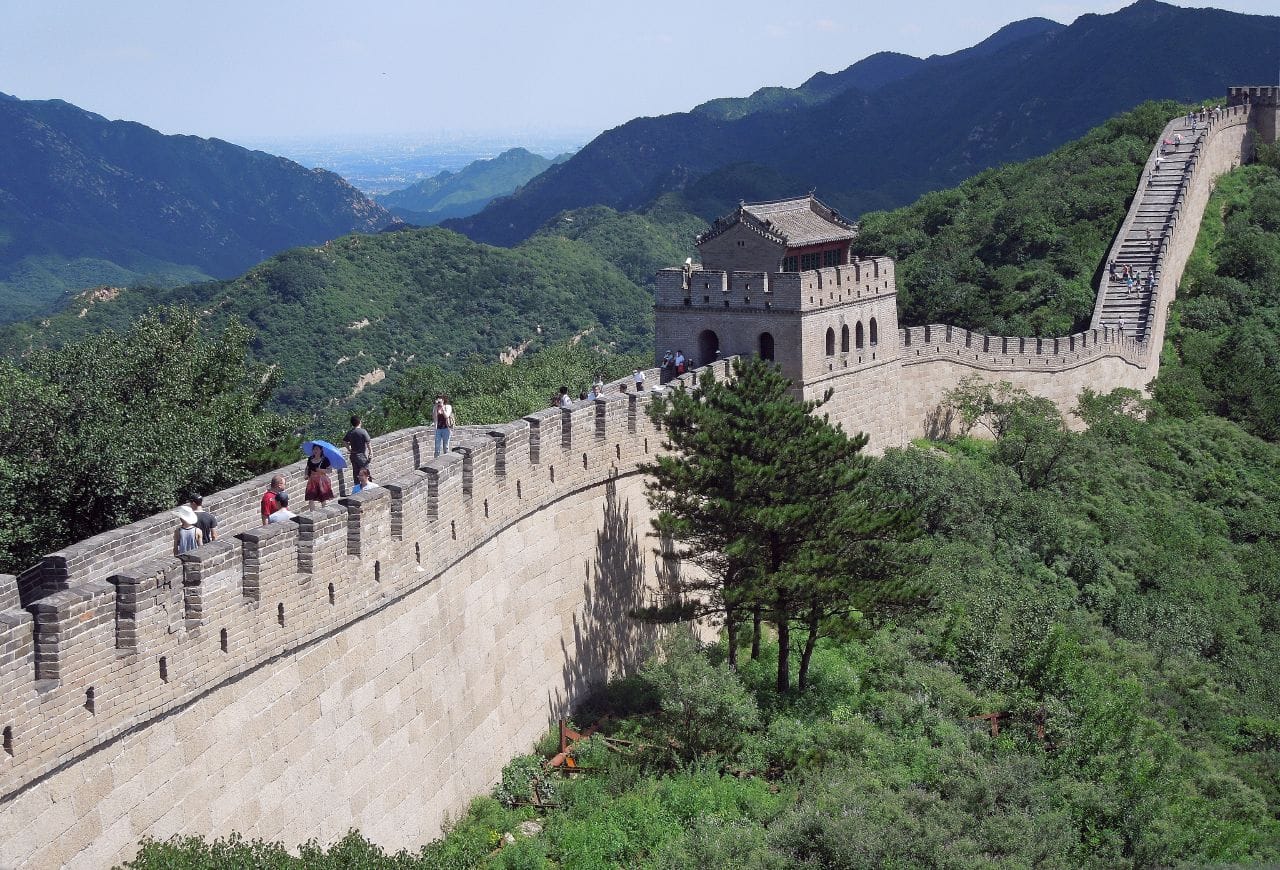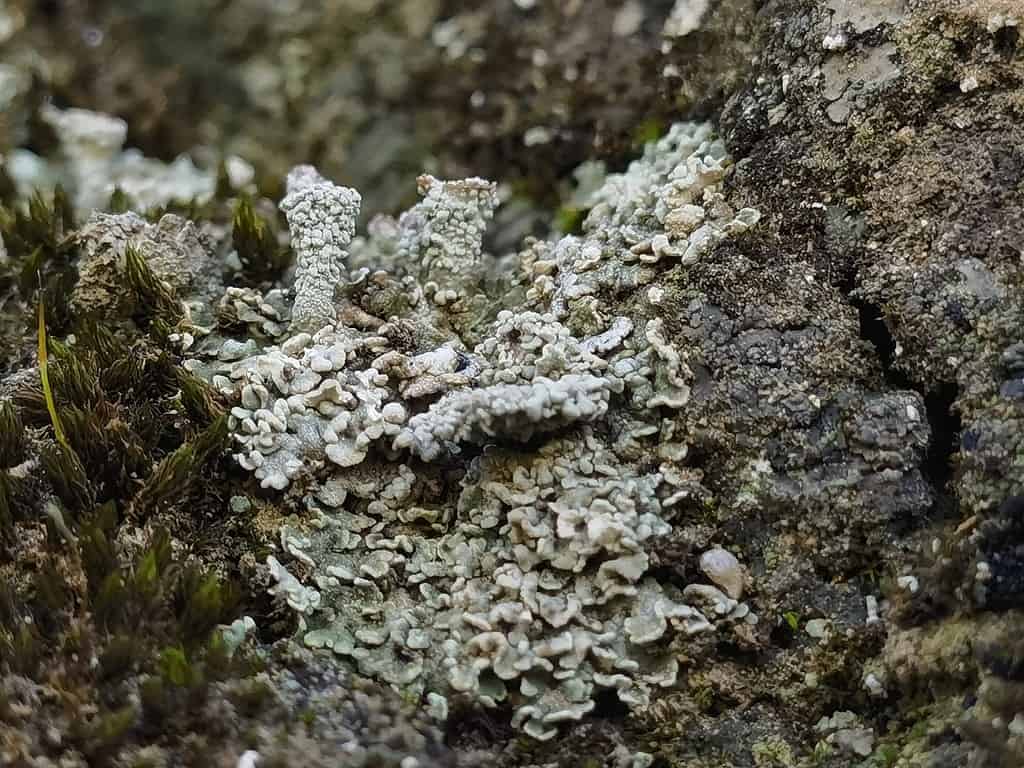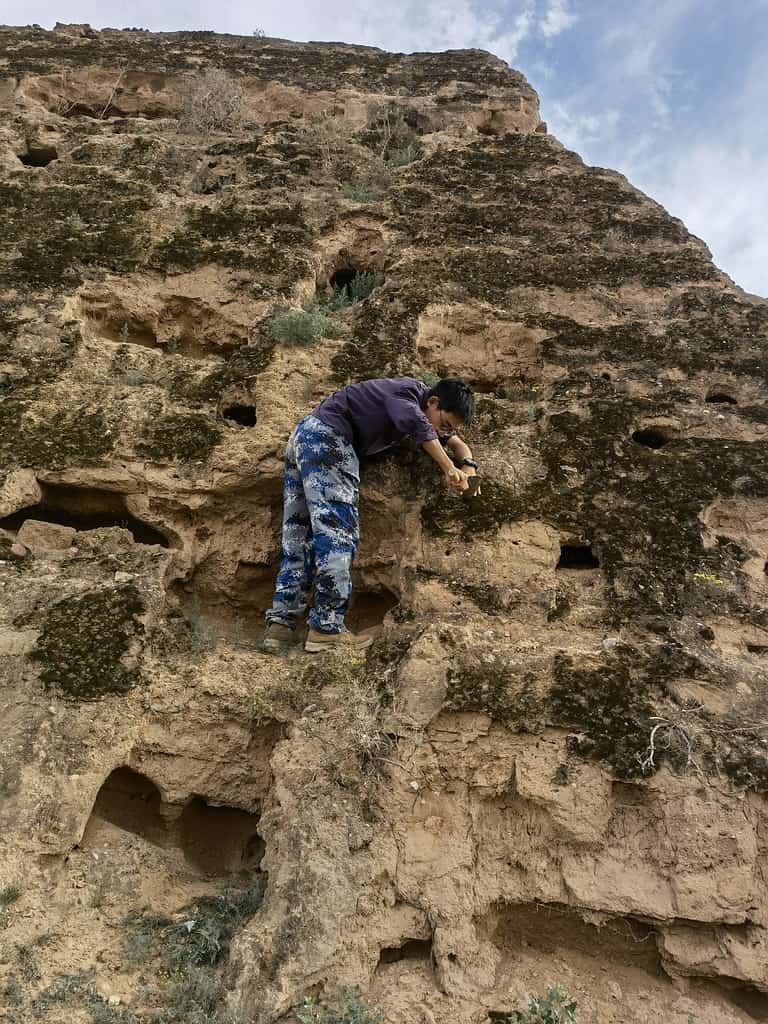
The Great Wall of China stretches over 8,800 km and has endured for over five centuries. You can’t see it from space (that’s a myth) but it’s still one of the most impressive structures on Earth. Yet, even this monumental heritage faces major threats from natural erosion processes like wind, rainfall, and salinization.
To make matters even worse, only a fraction of its original structure is well preserved. However, researchers have uncovered a critical yet overlooked aspect of the Great Wall’s conservation – biocrusts.
These communities of cyanobacteria, mosses, lichens, and other microorganisms form a natural barrier covering over 67% of the Wall’s surface, significantly influencing its mechanical stability and resistance to erosion.
What’s in a biocrust?
A biocrust, or biological soil crust, is a complex amalgamation of living organisms, including cyanobacteria, lichens, mosses, green algae, and microfungi, that form a thin, cohesive layer on the soil’s surface. These crusts are particularly prevalent in arid and semi-arid environments, where they play a crucial ecological role in fighting off erosion.
Biocrusts vary in composition and differ in prevalence depending on climate conditions. In arid climates, cyanobacterial biocrusts dominate, while moss biocrusts thrive in semiarid climates. Their presence and density are notably higher on fortress structures compared to walls.
Researchers have known for some time that on soils, biocrusts can act as a “glue” that prevents soil erosion. In fact, in some areas, biocrusts are considered a safeguard against storms and soil erosion. But they can also form on buildings, and it’s not clear what kind of effect they have in this scenario.

In the new study, researchers led by Yusong Cao from the Chinese Academy of Sciences analyzed vast swaths of the Great Wall, finding that the biocrusts were stronger than the rammed earth material upon which they were growing. The scientists found that the biocrusts help protect the structure in three main ways.
- Reduced porosity and water-holding capacity: Biocrusts decrease the porosity and water-holding capacity of the underlying earth, which in turn lowers the risk of erosion and structural damage from moisture.
- Enhanced mechanical stability: Biocrusts exhibit significantly higher compressive strength, penetration resistance, and shear strength compared to bare rammed earth, providing greater resistance against erosive forces.
- Lower erodibility: Biocrusts increase aggregate stability, enhance organic matter content, and reduce soluble salt content, thereby diminishing the overall erodibility of the Great Wall’s structure.
Can biocrusts be a nature-based conservation strategy?
The Great Wall stretches over such a long distance that researchers could investigate the biocrust protective effect in various climates.
They learned that the protective functions of biocrusts are not uniform across the Great Wall. Variations in climate, structure type (fortresses vs. walls), and regional characteristics influence the composition and effectiveness of biocrusts. In general, moss biocrusts in semiarid climates exhibit stronger protective qualities than their counterparts in arid regions.
The effect is so pronounced that the researchers suggest that biocrusts could offer a nature-based, cost-effective, and long-lasting approach to heritage conservation. Unlike conventional methods, biocrusts provide multiple protective functions, including stabilizing, consolidating, and acting as sacrificial layers and drainage roofs. They’re also very cheap to use.
However, there’s a catch: aesthetics.

While biocrusts offer significant protective benefits, their presence could potentially impact the aesthetic value of heritage sites. This aspect warrants further research to determine the acceptable level of biocrust coverage that balances conservation needs with maintaining the original appearance of the heritage.
So we need to balance the potential upsides of biocrust protection with aesthetical constraints. Ultimately, the findings from this study underscore the importance of considering natural processes in conservation efforts.
By embracing biocrusts as allies in the fight against erosion, we can protect not just the Great Wall but other similar heritage sites worldwide, ensuring they endure for future generations to marvel at.
Journal Reference: Yousong Cao et al, Biocrusts protect the Great Wall of China from erosion, Science Advances (2023). DOI: 10.1126/sciadv.adk5892









